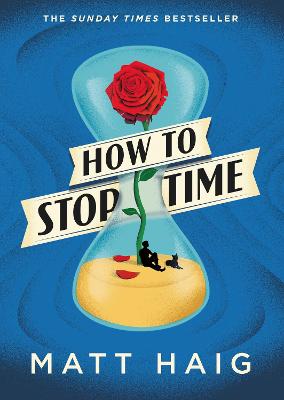Reviewed by brokentune on
Forever, Emily Dickinson said, is composed of nows. But how do you inhabit the now you are in? How do you stop the ghosts of all the other nows from getting in? How, in short, do you live?”
You know when sometimes it feels like a book chooses you rather than the other way around? Apparently, the two books I picked up while dazed with exhaustion at Heathrow last month did exactly that. I knew little about either of them and both turned out to provide exactly the kind of world-critical comfort I needed.
And, yes, I tend to not turn to sweet or light reads for comfort. Never have, really.
Anyway, How to Stop Time tells the story of Tom who was born in 1581 and "suffers" from a rare condition that makes him age very, very slowly. So, he lives through the centuries, falls in love, looses his loved ones, sees the world change, and sees the world remain the same.
"I go on the BBC and Guardian websites. I read a couple of news articles about fracturing US and Chinese relations. Everyone in the comments section is predicting the apocalypse. This is the chief comfort of being four hundred and thirty-nine years old. You understand quite completely that the main lesson of history is: humans don't learn from history."
Tom really suffers with this condition. He finds it hard to invest his life in people that he knows will die so long before him. He also finds it hard to live in one place, because his condition means that he is looked up with suspicion by the people around him, at best. At worst, he and his loved ones are persecuted.
“Human beings, as a rule, simply don't accept things that don't fit their worldview.”
He lives through the plague and the witch hunts and several other catastrophes. He discovers new worlds with Captain Cook and sees them go to seed.
“And yet we had done what so often happened in the proud history of geographic discovery. We had found paradise. And then we had set it on fire.”
I really enjoyed the book. The story struck a balance between bildungsroman as we watch Tom grow and learn about who he is and about his place in the world, mystery as we follow Tom's quest to find his daughter, thriller as watch Tom get caught up in a dubious organisation, and social criticism. I really felt for Tom as he, despise his wisdom of age, struggled to deal with each moment of new-ness in this world.
“As far as I can see, this is a problem with living in the twenty-first century. Many of us have every material thing we need, so the job of marketing is now to tie the economy to our emotions, to make us feel like we need more by making us want things we never needed before. We are made to feel poor on thirty thousand pounds a year. To feel poorly travelled if we have been to only ten other countries. To feel too old if we have a wrinkle. To feel ugly if we aren’t photoshopped and filtered. No one I knew in the 1600s wanted to find their inner billionaire. They just wanted to live to see adolescence and avoid body lice.”
What struck me most about the book, tho, was that Haig inserted snippets of positivity into the story. Despite the general observation that humanity is doomed to forever repeat itself because it does not take lessons from the past, there is also some hope:
“Whenever I see someone reading a book, especially if it is someone I don't expect, I feel civilisation has become a little safer.”
Reading updates
- Started reading
- 16 July, 2018: Finished reading
- 16 July, 2018: Reviewed
